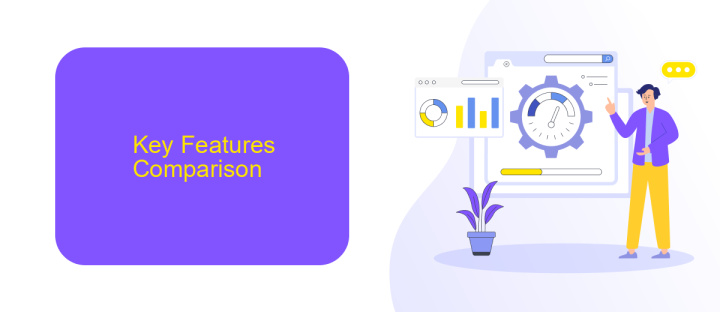MuleSoft Runtime Fabric Vs Cloudhub
In the realm of integration platforms, MuleSoft offers two powerful deployment options: Runtime Fabric and CloudHub. Both solutions aim to streamline application connectivity, but they cater to different needs and environments. This article delves into the key differences between MuleSoft Runtime Fabric and CloudHub, helping you determine which platform best suits your organization's requirements and strategic goals.
High-Level Overview
MuleSoft Runtime Fabric and CloudHub are two robust solutions for deploying and managing Mule applications. While both offer powerful features, they cater to different deployment needs and environments.
- MuleSoft Runtime Fabric: A container service that allows you to deploy Mule applications on any cloud or on-premises infrastructure. It provides greater control over the deployment environment, scalability, and security.
- CloudHub: A fully managed, multi-tenant integration platform as a service (iPaaS) that simplifies the deployment and management of Mule applications. It offers built-in high availability, automatic scaling, and robust security features.
Both platforms support seamless integration with services like ApiX-Drive, which facilitates the automation of data flows between various applications and services. By leveraging these platforms, organizations can ensure efficient and secure integration solutions tailored to their specific needs.
Key Features Comparison

MuleSoft Runtime Fabric and CloudHub offer distinct features tailored for different integration needs. Runtime Fabric provides a container-based service, allowing for on-premises, cloud, and hybrid deployments. This flexibility is ideal for enterprises looking to maintain control over their infrastructure while leveraging cloud capabilities. With advanced monitoring and high availability, Runtime Fabric ensures robust performance and resilience. It also supports a wide range of deployment options, making it adaptable to various IT environments.
On the other hand, CloudHub is a fully managed integration Platform-as-a-Service (iPaaS), designed for simplified cloud deployments. It offers seamless scalability and automatic updates, reducing the operational burden on IT teams. CloudHub's global reach ensures low latency and high availability across different regions. Additionally, it integrates effortlessly with ApiX-Drive, enabling users to automate workflows and connect multiple applications without extensive coding. This ease of use makes CloudHub an attractive option for businesses aiming to streamline their integration processes quickly and efficiently.
Pricing Model Analysis

When comparing MuleSoft Runtime Fabric and Cloudhub, understanding their pricing models is crucial for making an informed decision. Both platforms offer unique value propositions, but their cost structures differ significantly.
- Cloudhub: Cloudhub operates on a subscription-based pricing model, where costs are determined by the number of vCores required. This model is suitable for businesses with predictable workloads that can be easily scaled.
- MuleSoft Runtime Fabric: This platform uses a more flexible pricing model based on the number of cores utilized across on-premises and cloud environments. It caters to organizations needing hybrid deployment options and greater control over their infrastructure.
Choosing between these two depends on your organization's specific needs and budget. For instance, if you require a scalable, cloud-native solution, Cloudhub might be more cost-effective. Conversely, if you need a hybrid approach with extensive customization, MuleSoft Runtime Fabric could be a better fit. Additionally, integrating services like ApiX-Drive can further streamline your operations, offering seamless connectivity between different applications and platforms, enhancing overall efficiency.
Use Cases and Target Audience

MuleSoft Runtime Fabric and CloudHub serve different use cases and target audiences, making them suitable for various integration needs. Runtime Fabric is ideal for organizations that require a hybrid deployment model, allowing them to run Mule applications on-premises, in the cloud, or both. This flexibility is crucial for businesses with strict compliance requirements or those looking to leverage existing infrastructure.
On the other hand, CloudHub is a fully managed integration platform as a service (iPaaS) that simplifies the deployment and management of Mule applications. It is perfect for companies that prefer a cloud-native approach and want to minimize operational overhead. CloudHub's ease of use and scalability make it a popular choice for fast-growing businesses and startups.
- Runtime Fabric: Suitable for enterprises with complex, hybrid IT environments.
- CloudHub: Ideal for businesses seeking a cloud-based, managed solution.
- ApiX-Drive: Great for automating integrations with minimal technical expertise.
While both MuleSoft solutions cater to different needs, integrating a service like ApiX-Drive can further streamline the process. ApiX-Drive offers a user-friendly platform to automate and manage integrations, making it accessible for businesses of all sizes. Whether you choose Runtime Fabric or CloudHub, combining it with ApiX-Drive can enhance your integration capabilities.
Conclusion
In summary, both MuleSoft Runtime Fabric and CloudHub offer robust solutions for deploying and managing Mule applications, each with its unique advantages. Runtime Fabric provides greater control over infrastructure and is ideal for organizations with specific compliance or customization requirements. On the other hand, CloudHub offers a fully managed cloud environment, simplifying deployment and scaling, which is perfect for businesses looking to minimize operational overhead.
Choosing between these two options depends largely on your organization's needs and resources. If you require extensive customization and control, Runtime Fabric is the way to go. For those prioritizing ease of use and quick scalability, CloudHub is more suitable. Additionally, integrating with services like ApiX-Drive can further enhance your integration capabilities, making it easier to connect various applications and automate workflows. Ultimately, both platforms empower businesses to create seamless, efficient integrations tailored to their specific needs.
FAQ
What is the primary difference between MuleSoft Runtime Fabric and CloudHub?
Can MuleSoft Runtime Fabric run in a public cloud environment?
How does scaling differ between MuleSoft Runtime Fabric and CloudHub?
What are the key benefits of using CloudHub over MuleSoft Runtime Fabric?
Is there a way to automate integrations and streamline workflows with MuleSoft?
Time is the most valuable resource in today's business realities. By eliminating the routine from work processes, you will get more opportunities to implement the most daring plans and ideas. Choose – you can continue to waste time, money and nerves on inefficient solutions, or you can use ApiX-Drive, automating work processes and achieving results with minimal investment of money, effort and human resources.

